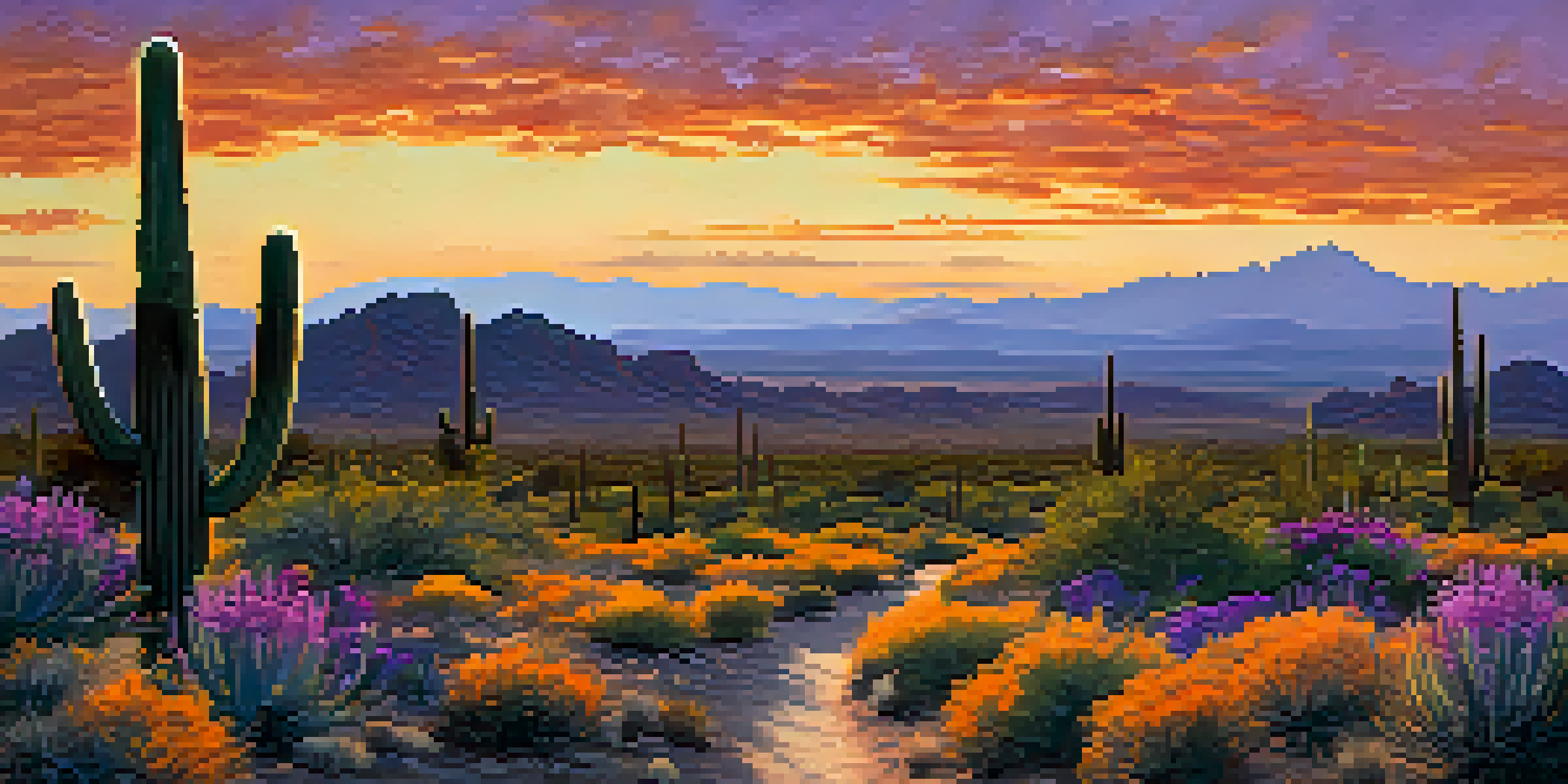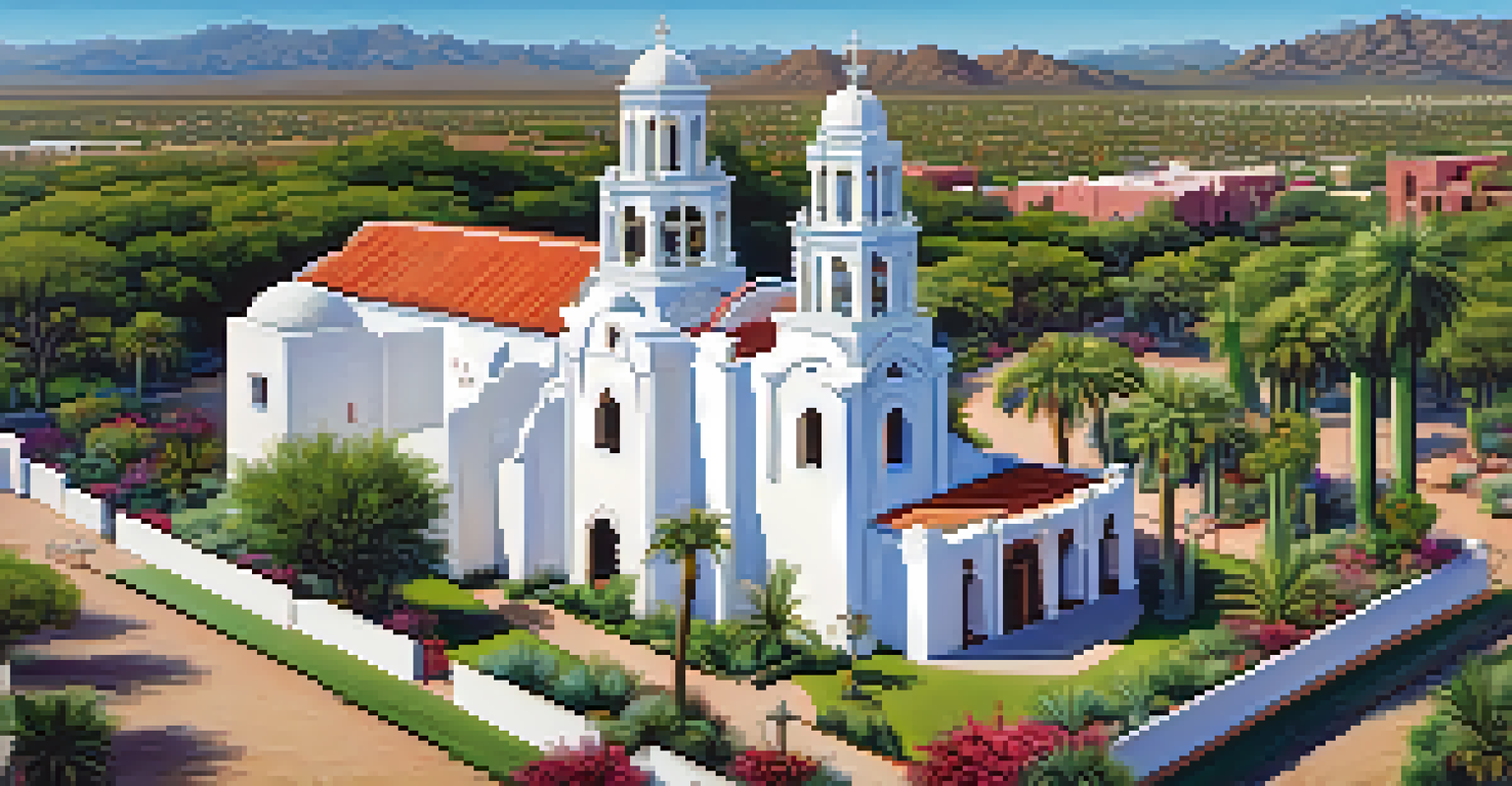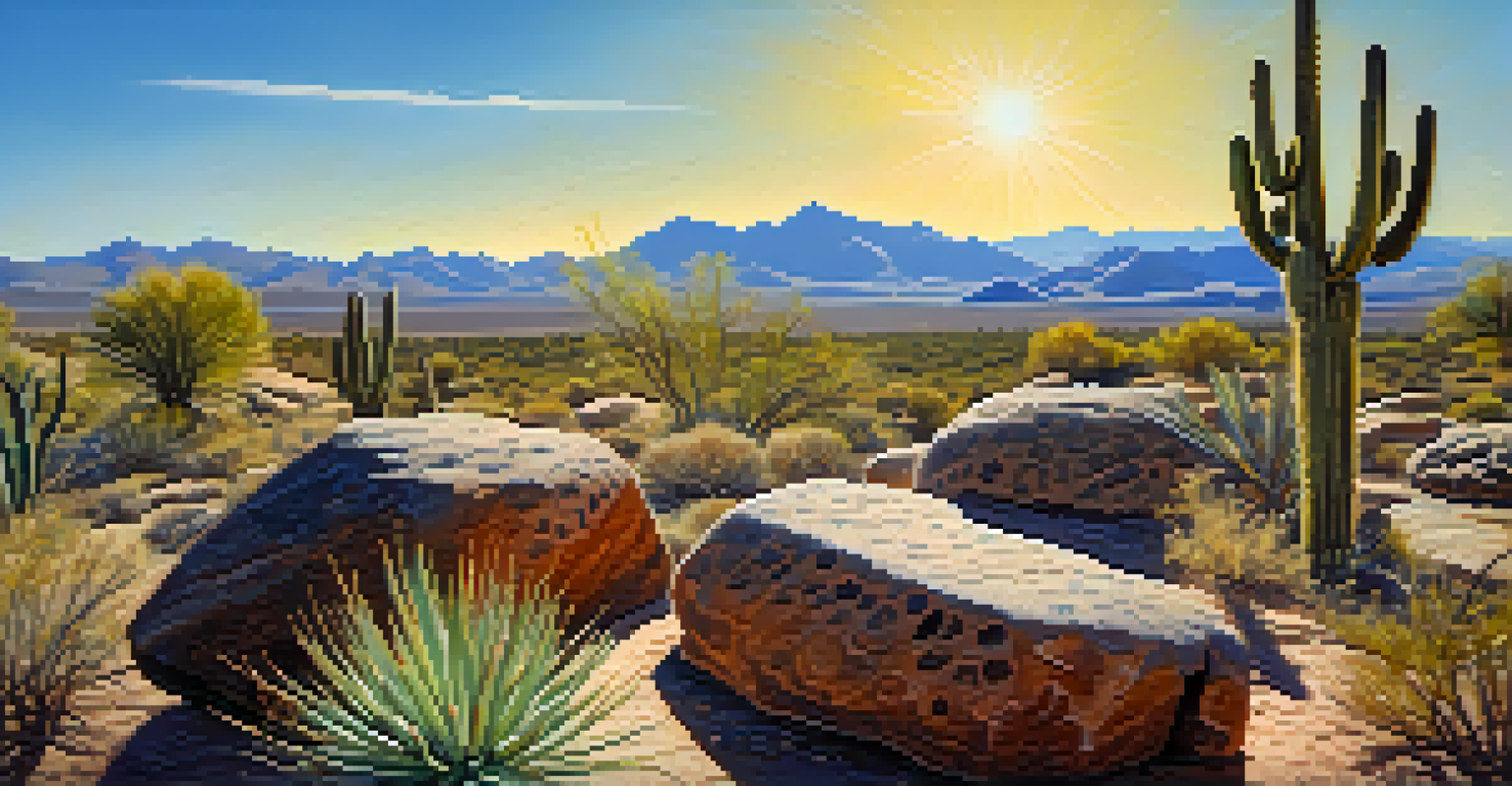History and Nature: Cultural Sites in Tucson's Parks

The Rich Cultural Tapestry of Tucson's Parks
Tucson is a city steeped in history, and its parks reflect that vibrant heritage. From ancient Native American sites to Spanish colonial influences, the landscape tells a story that spans centuries. Each park serves as a living museum where visitors can connect with the past while enjoying the beauty of nature.
A nation's greatness is measured by how it treats its weakest members.
For instance, the iconic Saguaro National Park features not only breathtaking desert scenery but also historical sites that highlight the region's indigenous cultures. The trails invite you to explore areas where generations of people have walked, hunted, and gathered. This blend of culture and nature makes each visit a unique experience.
Moreover, the parks are not just about the past; they are thriving spaces for community engagement. Events and programs often celebrate local history, ensuring that the rich narratives of Tucson's diverse populations continue to be shared and appreciated. This connection fosters a deeper sense of belonging for residents and visitors alike.
Saguaro National Park: A Living Heritage
Saguaro National Park, known for its towering cacti, is a prime example of how nature and history intertwine. The park is home to archaeological sites that provide insight into the lives of the Hohokam people, who thrived in the Sonoran Desert over a thousand years ago. These sites offer a fascinating glimpse into their irrigation techniques and community structures.

Visitors often find themselves in awe while walking the trails, surrounded by the iconic saguaro cacti that have become symbols of the American Southwest. As you explore, you can imagine how these magnificent plants have witnessed centuries of change, from ancient civilizations to modern-day conservation efforts. It's a reminder of the resilience of both nature and culture.
Cultural Heritage in Tucson's Parks
Tucson's parks serve as living museums, showcasing the rich history and cultural diversity of the region.
Additionally, the park hosts educational programs and guided tours that delve into its rich history and ecology. These experiences not only enhance your understanding of the area but also foster a deeper appreciation for the delicate balance between preserving nature and honoring cultural legacies.
The Historic Significance of Mission San Xavier del Bac
Mission San Xavier del Bac, often referred to as the 'White Dove of the Desert,' is a stunning example of Spanish colonial architecture nestled within Tucson's landscape. Founded in the late 17th century, this mission is not just a religious site; it's a cultural landmark that tells the story of the Tohono O'odham people and Spanish settlers. The mission's intricate designs and vibrant history draw visitors from all walks of life.
Preservation of one's own culture does not require contempt or disrespect for other cultures.
The grounds surrounding the mission are equally inviting, with lush gardens and serene spaces that reflect the area's natural beauty. As you wander through the gardens, you get a sense of the harmony between the cultural and natural elements that define Tucson. It’s a peaceful escape that also invites reflection on the historical significance of the site.
Mission San Xavier del Bac is also a hub for community events and cultural celebrations, making it a living part of Tucson's contemporary life. The blend of history, art, and spirituality creates a unique atmosphere where the past and present coexist beautifully, enriching the visitor experience.
The Role of Tucson's Parks in Community Engagement
Tucson's parks play a crucial role in fostering community engagement, creating spaces where culture and nature meet. Many parks host events that celebrate local traditions, art, and history, allowing residents to connect with their roots. These activities not only promote cultural awareness but also strengthen community bonds, making parks vital to Tucson's social fabric.
For instance, the annual Tucson Meet Yourself festival takes place in downtown parks, showcasing the city's diverse cultural heritage through food, music, and art. This event transforms the parks into vibrant hubs of activity, drawing people together to celebrate their shared history. It's a perfect example of how parks can serve as platforms for cultural expression and unity.
Community Engagement through Events
Local parks host various events and programs that celebrate Tucson's traditions, fostering community bonds.
Moreover, educational programs in parks often focus on both environmental stewardship and cultural history. Workshops and guided tours teach visitors about the significance of local flora and fauna while also highlighting the stories of the people who have lived in harmony with these landscapes for generations. This dual focus enriches the experience and promotes a deeper appreciation for the area.
Exploring Tucson Mountain Park's Cultural Heritage
Tucson Mountain Park is another treasure trove of cultural and natural wonders. The park is home to ancient petroglyphs that date back thousands of years, providing a tangible connection to the early inhabitants of the region. These rock carvings serve as a reminder of the rich history embedded in the landscape, inviting visitors to ponder the stories they tell.
As you hike through the park, the dramatic desert scenery unfolds, showcasing the stunning views of the surrounding mountains and valleys. This natural beauty is complemented by the cultural significance of the area, where many Native American tribes continue to celebrate their heritage. The juxtaposition of these elements creates a unique experience for outdoor enthusiasts and history buffs alike.
Moreover, Tucson Mountain Park regularly hosts cultural events and programs that highlight the traditions of local tribes. These initiatives not only educate visitors about the area's history but also honor the ongoing connection between the land and its original caretakers. This respect for heritage makes the park a place of learning and appreciation.
The Educational Value of Parks in Tucson
Tucson's parks are not just places for recreation; they are also vital educational resources. Many parks offer interpretive signs, guided tours, and workshops that delve into the history and ecology of the region. This educational focus allows visitors to gain a deeper understanding of the unique interplay between Tucson's diverse ecosystems and its rich cultural heritage.
For example, the Tucson Botanical Gardens provides insights into the native plants of the Sonoran Desert and their significance to local cultures. Through hands-on experiences and engaging displays, visitors learn about sustainable practices and the importance of preserving these natural resources. This educational aspect helps foster a sense of responsibility for the environment.
Education and Preservation Initiatives
Tucson's parks provide educational resources that promote environmental stewardship and cultural preservation for future generations.
Furthermore, schools often utilize these parks as outdoor classrooms, allowing students to connect with history and nature in a tangible way. Experiencing nature firsthand can ignite a passion for conservation and cultural preservation among younger generations. By intertwining education with exploration, Tucson's parks play a pivotal role in shaping future stewards of the environment.
Preserving Nature and Culture for Future Generations
As we explore Tucson's parks, it becomes clear that preserving both nature and cultural heritage is essential for future generations. These landscapes offer a glimpse into the past while serving as vital resources for education and recreation. Communities recognize the importance of protecting these spaces to ensure that their stories and natural beauty endure.
Efforts to preserve cultural sites within parks often involve collaboration between local tribes, historians, and conservationists. This partnership ensures that the narratives of indigenous peoples are respected and celebrated, allowing them to share their traditions with visitors. Such initiatives foster understanding and respect for the diverse cultures that shape Tucson's identity.

Moreover, community-led conservation projects aim to restore natural habitats and protect endangered species. By engaging residents in these efforts, parks become places of stewardship where people can actively participate in preserving their heritage and environment. The connection between nature and culture becomes a shared responsibility, enriching the community for generations to come.